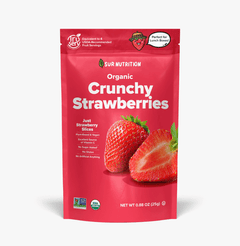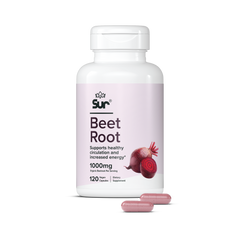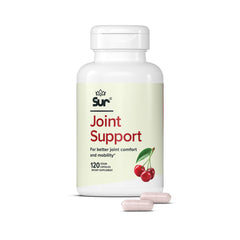Fiber is one of the vegan nutrition essentials, and the benefits of a high-fiber diet extend beyond just gut health. High-fiber foods can support natural weight management, improve digestion, and help maintain a balanced gut microbiome, which are all essential for long-term health and sustainable weight control.
High-fiber foods for weight loss include whole grains like oats and quinoa, legumes such as lentils and chickpeas, and fruits like apples, berries, and pears. Vegetables such as broccoli, carrots, and spinach are also excellent choices, as are nuts and seeds like almonds and flaxseeds. These foods are not only high in fiber but also rich in essential nutrients and low in calories, helping you feel fuller longer and reducing the temptation to overeat.
In this guide, we’ll address some common high-fiber diet myths, explore how fiber supports weight management, and share practical tips for incorporating fiber-rich foods and supplements into your diet!
Fiber and Weight: Separating Fact From Fiction
Understanding fiber’s role in weight management means debunking some of the myths that surround it. Let’s break down the facts:
Myth: Increased Fiber Inhibits Mineral Absorption
Some believe fiber interferes with the body’s ability to absorb essential minerals like calcium and magnesium. In reality, fiber enhances digestion and improves mineral absorption. Its role in fostering healthy gut bacteria creates a more active digestive system, improving how your body processes nutrients.
Myth: Fiber Is Only Relevant to Gut Health
While fiber is critical for gut health, its benefits go far beyond. Fiber aids in weight management by stabilizing blood sugar, enhancing feelings of fullness, and reducing overeating. Additional perks include better prebiotic consumption, stronger bones due to improved calcium absorption, and a potential boost to your immune system and cognitive function.
Myth: Getting Enough Fiber Is Easy
The American Heart Association reports that most adults consume just fifteen grams of fiber daily, which is only half the recommended twenty-five to thirty grams. Even with a balanced, plant-based diet, it’s challenging to meet this target without exceeding your caloric intake. Many high-fiber foods, such as nuts, seeds, and certain grains, are calorie-dense, while fruits and vegetables can leave you feeling full before you reach your fiber goal.
Tips for Increasing Your Fiber Intake
If you’ve realized your fiber intake is falling short, don’t worry–there are simple ways to boost it without significantly increasing calories. Here’s how:
- Swap refined carbs for whole grains: Replace white rice, bread, and pasta with brown rice, whole grain bread, or whole grain pasta. These options provide more fiber and nutrients with similar calorie counts.
- Prioritize fiber in your meals: Focus on fiber-rich vegetables and legumes like beans, carrots, and lentils. Use them as the main ingredient in your meals, reducing the proportion of lower-fiber components like protein or carbs.
- Choose fiber-forward snacks: Switch to snacks like apples, berries, or a small portion of nuts or seeds. These provide fiber and healthy fats, helping curb hunger between meals.
- Experiment with incorporating chia seeds or flaxseeds into your breakfast by adding them to smoothies, yogurt, or even baked goods. You can also try starting meals with a fiber-rich soup or salad. For example, a lentil soup or a mixed green salad topped with chickpeas can help you reach your daily fiber goals while keeping your calorie intake in check.
- Incorporate a high-quality foods: Adding a plant-based foods like Nutrim Oat Beta Glucan Powder can help you achieve your fiber goals effortlessly. A single 7.5-gram scoop mixed into a smoothie or juice twice daily boosts fiber intake with minimal calories, no trans fat, sodium, or cholesterol.
Benefits of a High-Fiber Diet
In addition to aiding weight management, fiber plays a role in heart health by reducing LDL cholesterol levels. Soluble fiber found in oats and barley binds to cholesterol particles, preventing them from being absorbed into the bloodstream. Furthermore, diets high in fiber are associated with lower risks of developing type 2 diabetes, as they improve the body’s insulin sensitivity over time.
By increasing your fiber intake, you’re not just improving digestion–you’re laying the foundation for better overall health. Fiber helps control weight, enhances blood sugar stability, and supports a diverse gut microbiome. Incorporating a variety of high-fiber foods and supplements ensures you reap these benefits while enjoying flavorful, satisfying meals.
Whether you’re focused on weight loss or optimizing your overall nutrition, fiber is a cornerstone of plant-based wellness. Start small, stay consistent, and enjoy the long-term rewards!




